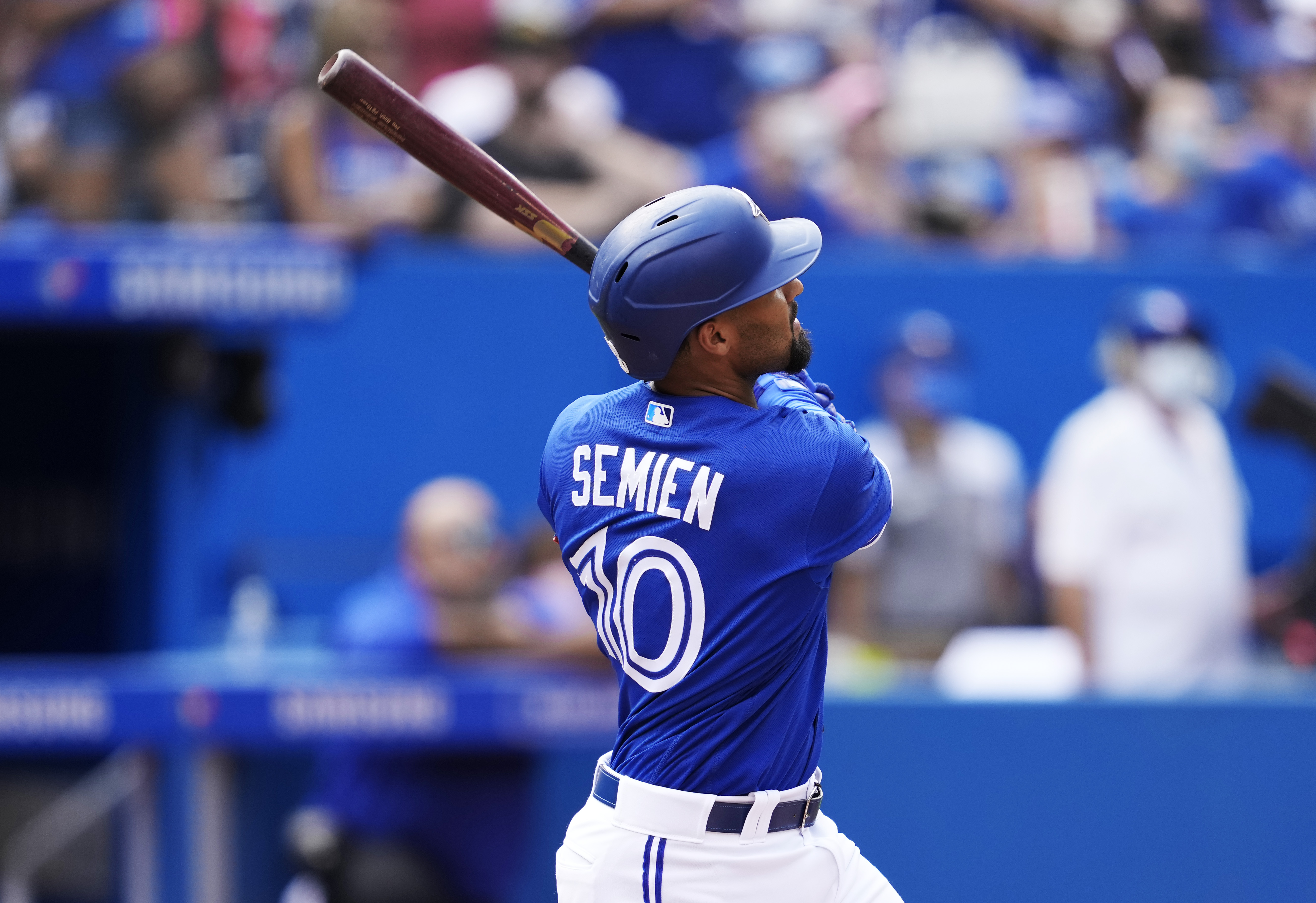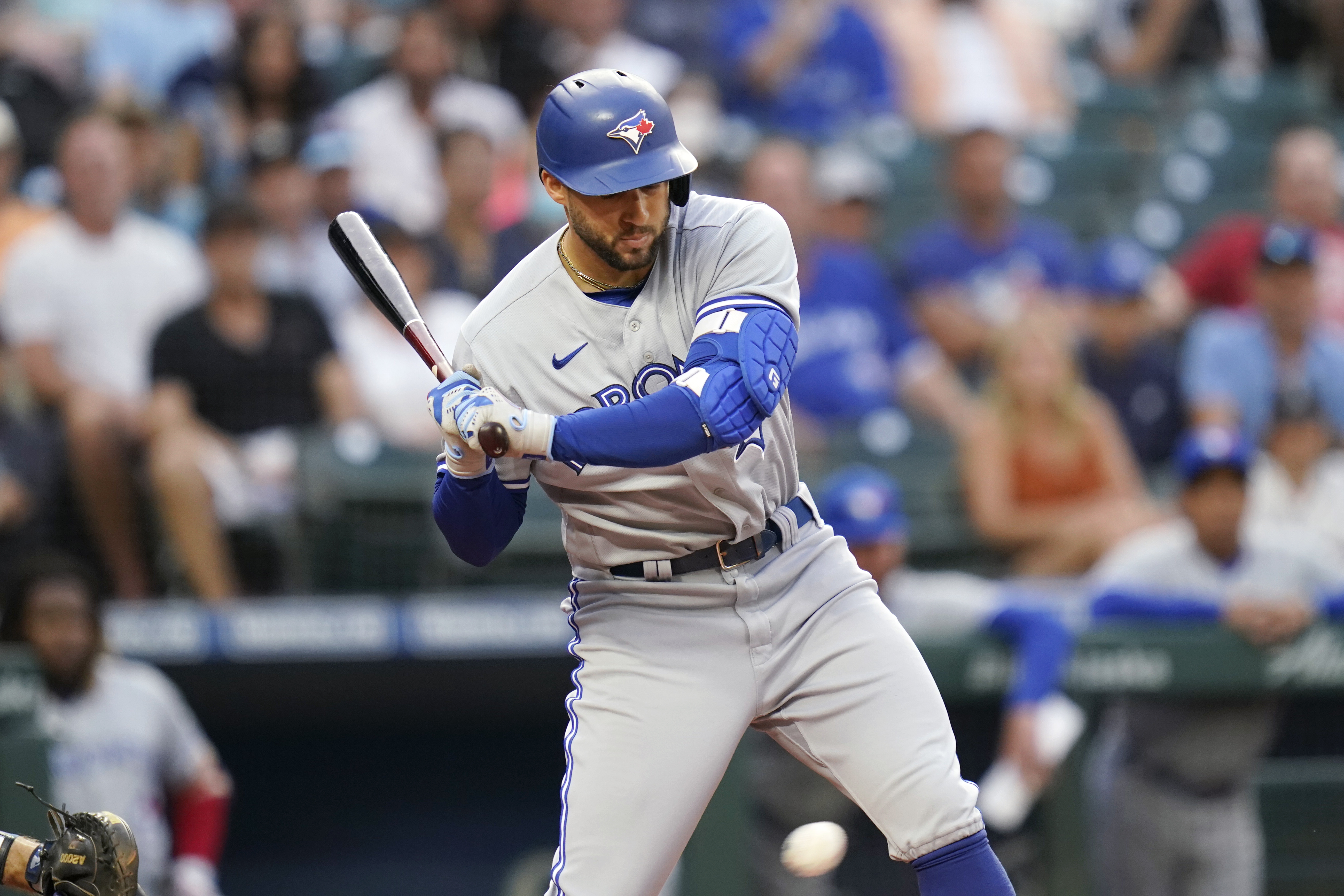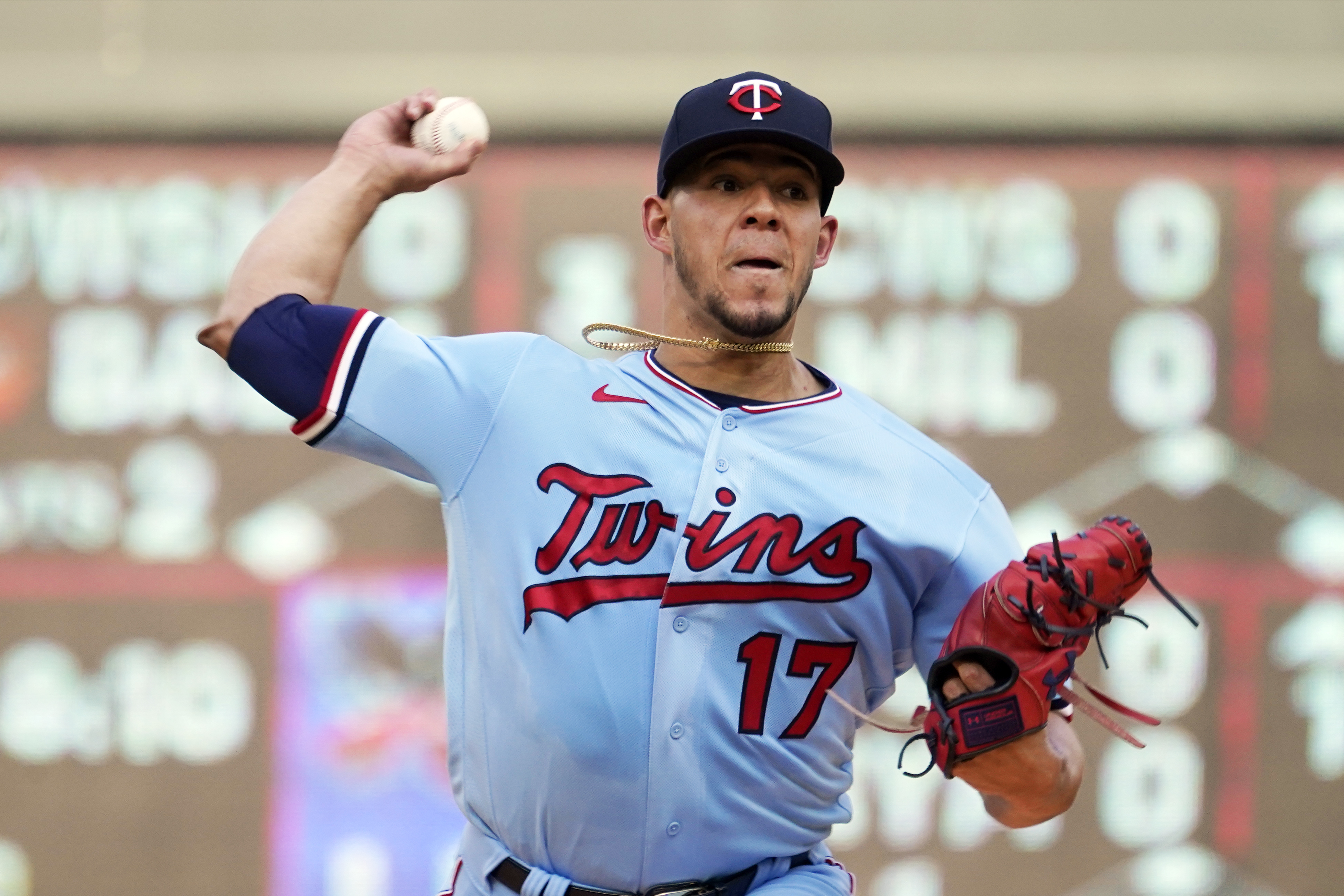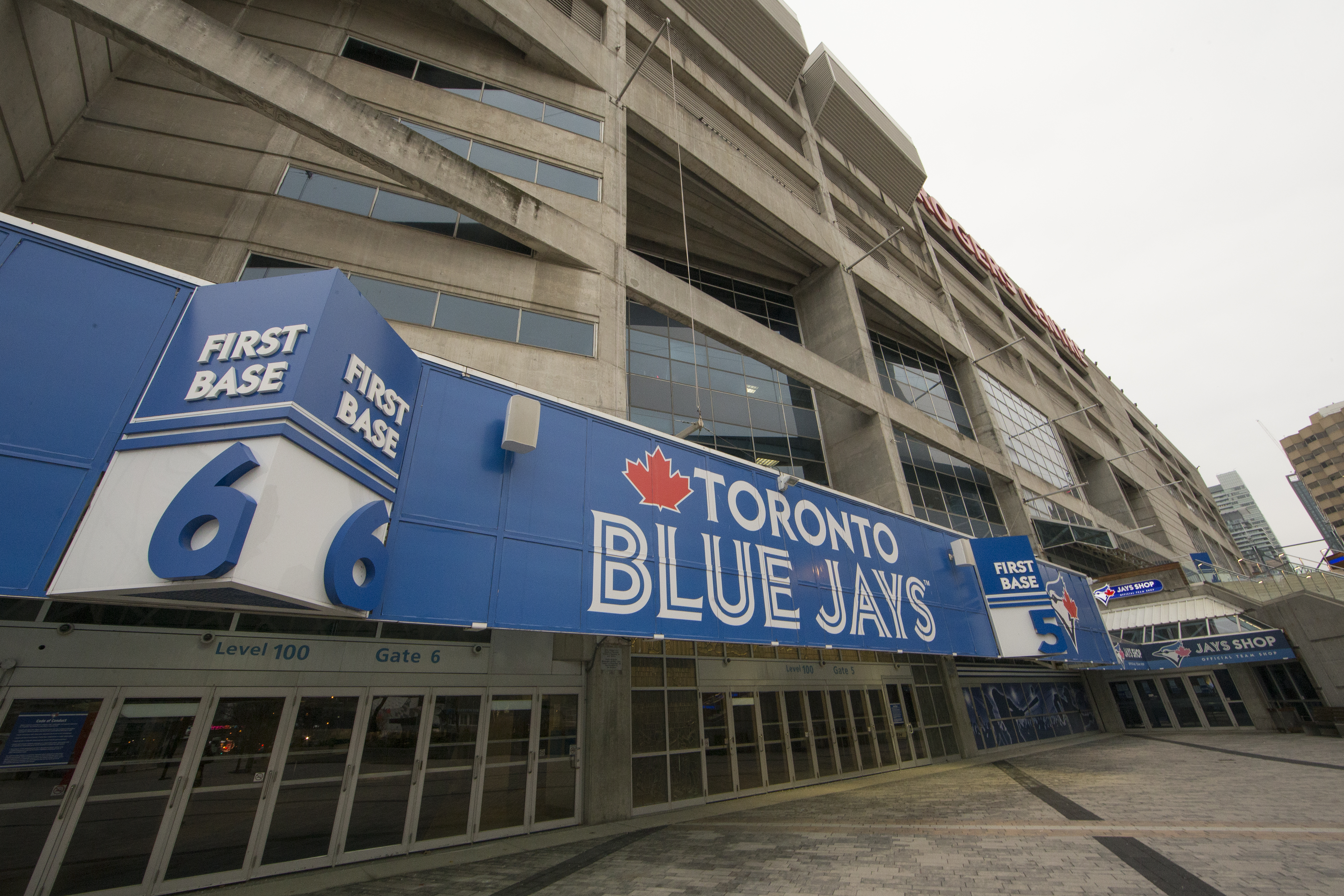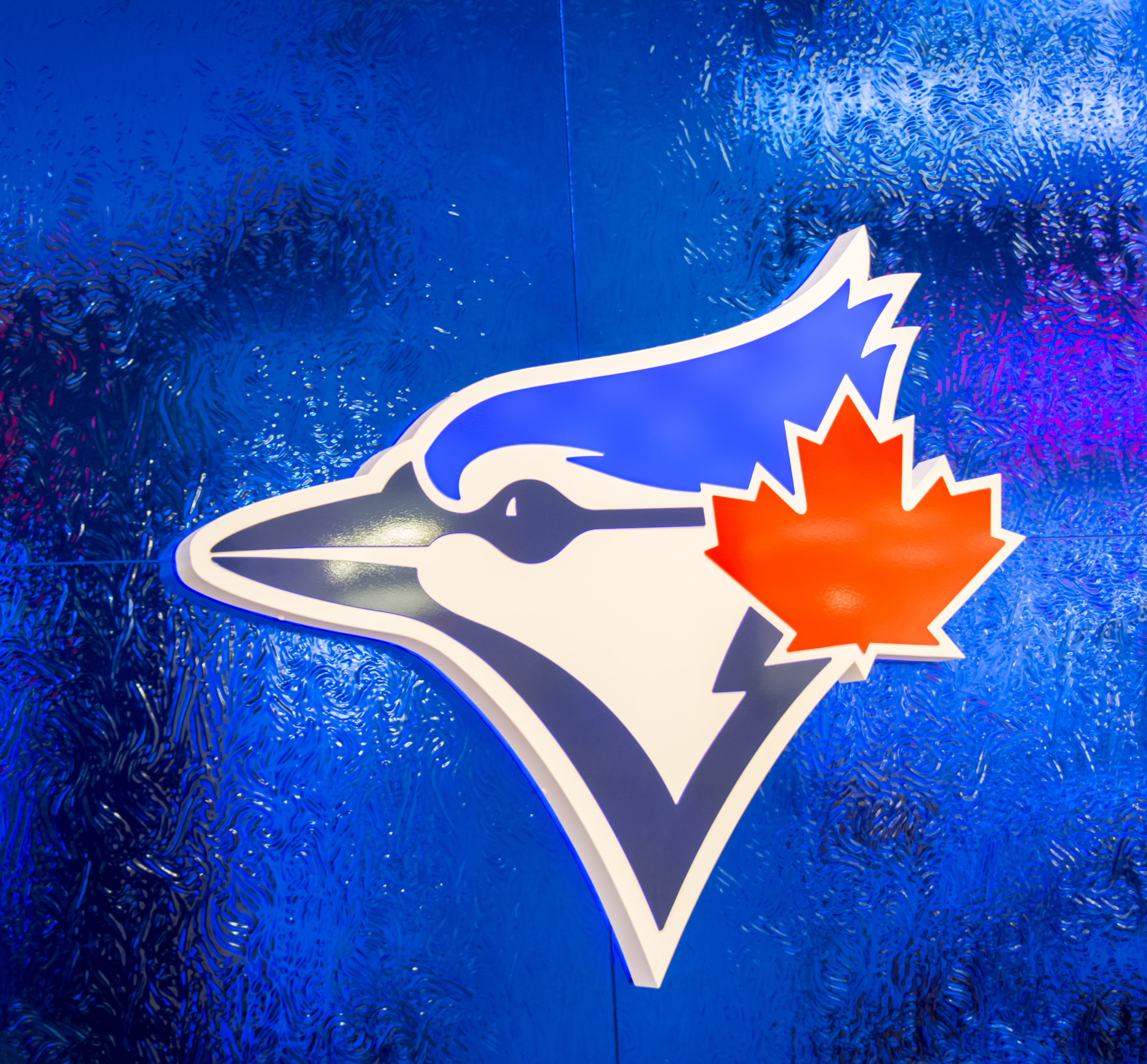Vlad Jr. and the Red-Hot Blue Jays Are MLB's Nightmare Playoff Matchup
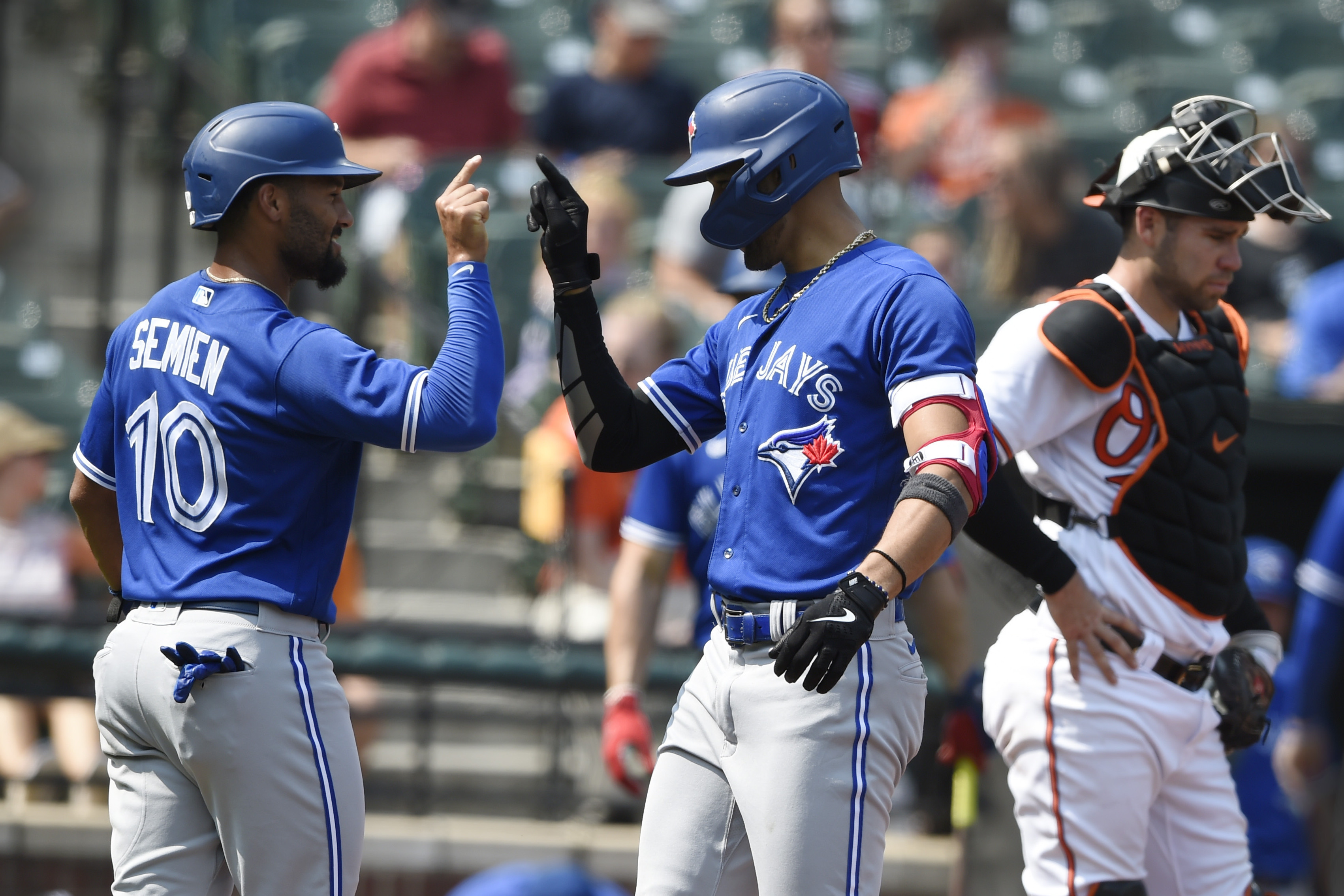
Given that the Toronto Blue Jays have spent the bulk of the season (85 days, to be exact) in fourth place in the American League East, they ought to pat themselves on the back for how they'd nonetheless be in possession of the AL's top wild-card spot if the 2021 campaign ended today.
Or they could just as easily keep pounding the crud out of their enemies until there's nobody left to oppose them.
Punctuated by MVP candidate Vladimir Guerrero Jr.'s nine home runs, the Blue Jays are 15-2 with a plus-62 run differential since Aug. 28. Their most notable accomplishments include never even trailing in a four-game sweep of the New York Yankees and dropping a club-record 47 runs in a subsequent four-gamer opposite the Baltimore Orioles.
Granted, this Major League Baseball season has already seen its share of red-hot teases that suddenly fizzled. Take the Yankees, who are just 4-12 since winning 13 in a row between Aug. 14 and 27. Or Atlanta, which went 16-2 between Aug. 3 and 22 but has last 10 of 18 since then. Or the Oakland Athletics, who are just 63-59 since winning 13 in a row in April.
Yet while the Blue Jays' recent hot stretch has only improved their record to 81-63, it's also pushed what was already a pretty good run differential into downright great territory at plus-174. That's actually between the Tampa Bay Rays (plus-170) and Houston Astros (plus-192), who've won 89 and 84 games, respectively.
So, don't see the Blue Jays as a team that's just lucky to be where it is. If anything, they're one that other teams will be lucky to beat in October.
MLB's Most Terrifying Offense
The Blue Jays already had one of the best offenses in MLB even before they caught fire, ranking second with a .776 OPS and 189 home runs through Aug. 27.
Cut to now, and they're all alone in first place in both categories with a .802 OPS and 232 home runs.
The Blue Jays hit homers in bunches en route to the playoffs in 2020, so it's not the biggest surprise that the long ball is their main offensive weapon in 2021. Indeed, the only way that was ever not going to be the case was if they got nothing out of free-agent signees George Springer and Marcus Semien while Guerrero continued to play below the huge expectations that previously accompanied him as baseball's No. 1 prospect.
Instead, Guerrero has indeed broken out with a 1.018 OPS and 45 home runs, while Springer's and Semien's combined numbers come out to an .889 OPS and 56 homers. Teoscar Hernandez (27), Bo Bichette (24) and Randal Grichuk (22) have each topped 20 homers. With 19 to his name, Lourdes Gurriel Jr. will get there soon.
Why focus on the home runs? Well, two reasons:
- Home runs are fun, darn it
- Home runs are also extremely useful in October
To that second point, four of the last five World Series have gone to the team that won the home run battle. And out of 149 total playoff games between 2016 and 2020 in which a team hit at least two home runs, 108 came with a win.
As evidenced by their MLB-high 66 games with at least two home runs, the Blue Jays are certainly capable of those kinds of outbursts. And if you go looking for reasons why this habit might not translate to October, you're bound to come up empty.
Even though they've played their home games at three different hitter-friendly parks, the Blue Jays are only slightly better at going yard at home (1.7 per game) than they are on the road (1.5 per game). And while Charlie Montoyo's lineups lean to the right, the team has a higher slugging percentage against righties (.468) than against lefties (.465).
Approach-wise, the Blue Jays are in the bottom half of the American League in out-of-zone swing rate. They're not easily beaten within the strike zone, where their .553 slugging percentage is the best in MLB.
Toronto also leads the majors with a .501 SLG against fastballs and a .444 SLG against breaking stuff, so its .381 SLG against off-speed might underscore the team's only true weakness. But since such pitches account for only 12.9 percent of all offerings, off-speed might not be to the Blue Jays what the heel is to Achilles.
The Springer factor is still another consideration. He's having an excellent season in his own right, yet just as significant is how much he's elevated Toronto's entire offense when he's been healthy:
- 84 games without Springer: .773 OPS and 5.0 R/G
- 60 games with Springer: .843 OPS and 5.8 R/G
Basically, Toronto's offense has been the league's best even though it's been at full strength for only 40 percent of its games. When it is at full strength with Springer, it's unstoppable.
These Jays Can Pitch, Too
As for why it took so long for the Blue Jays to find their stride, the over-simplified answer is that even an offense as good as theirs can only do so much in the face of unreliable pitching.
Even as recently as July 29, Toronto's overall team ERA began with a four. The blame for that was split pretty much evenly between the rotation, which had a 3.97 ERA, and the bullpen, whose ERA was at 4.05.
In the weeks since then, the 3.58 ERA attached to Toronto would indicate that its pitching staff has at least achieved a level of respectability. The actual truth, though, is that the team's arms could be just as instrumental in a deep postseason run as its bats.
To wit, the Jays have a top-notch Game 1 starter in the person of Robbie Ray. He began the year as a sort of reclamation project after a disastrous 2020, but more consistent mechanics have led to enhanced control and, ultimately, a 2.69 ERA and 220 strikeouts over 170.1 innings. By rWAR, he's the man to beat for the AL Cy Young Award.
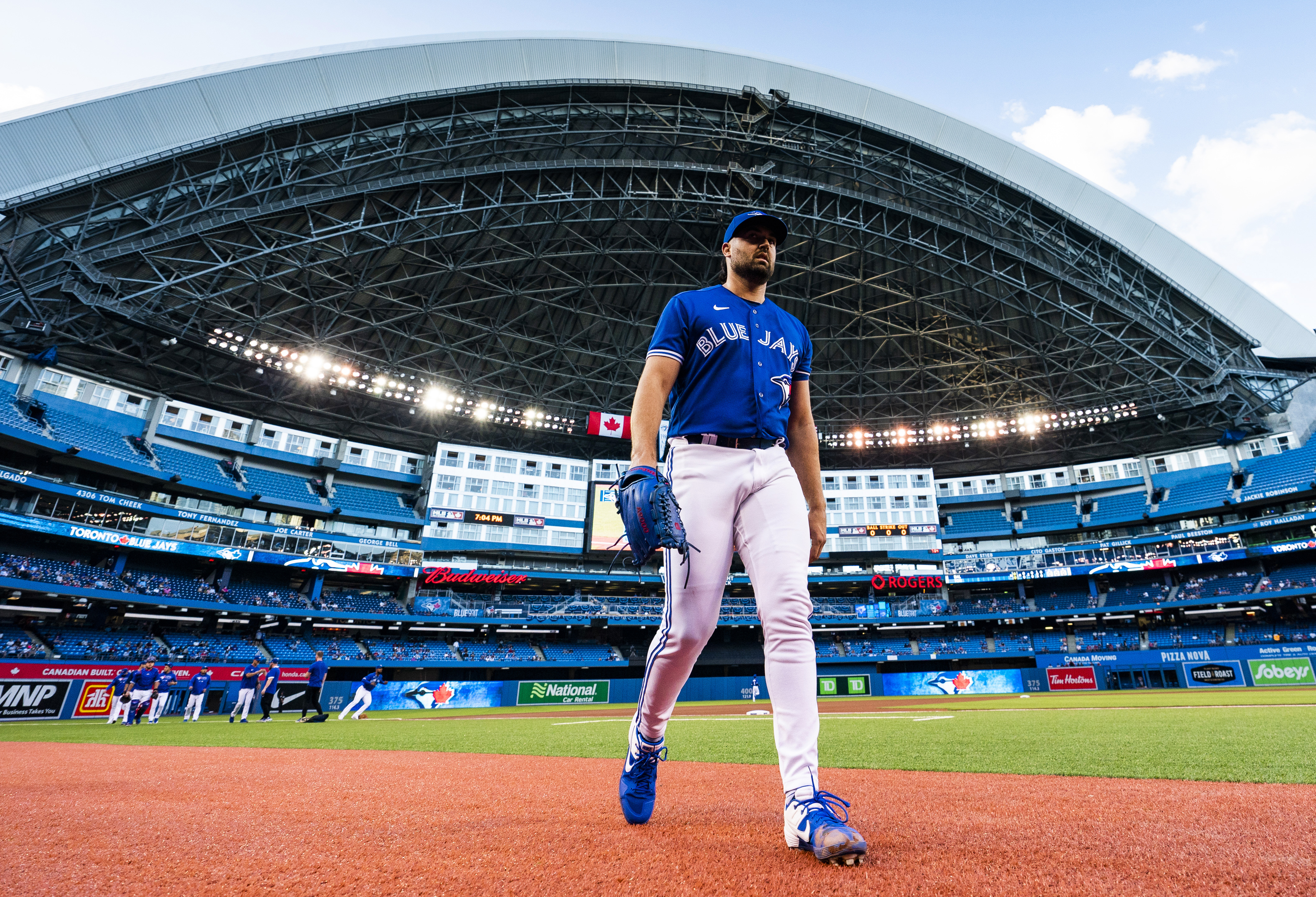
At least in theory, Toronto has two additional playoff aces in veteran southpaw Hyun Jin Ryu and trade deadline acquisition Jose Berrios, both of whom boast All-Star credentials. The former's 7.27 ERA since Aug. 8 pushes back on that a little, but he should get on track if he can shake his suspiciously high .320 BABIP during this span.
In the bullpen, Montoyo has recently cultivated a downright dominant late-inning foursome: Jordan Romano, Adam Cimber, Tim Mayza and Trevor Richards. They've handled 68 innings since the beginning of August and pitched to a 2.25 ERA with 68 more strikeouts than walks.
Throw in Steven Matz, who's quietly been hot with a 2.42 ERA in eight starts since Aug. 4. Also rookie Alek Manoah, who's quietly put up a 3.39 ERA in 17 outings. And flame-throwing prospect Nate Pearson, who's been clocked as high as 101 mph since returning to the majors on Sept. 3. And also Julian Merryweather, who was an early sensation before an oblique strain sidelined him for five months.
So, never mind ERA. A more telling measure of the health of Toronto's pitching staff might be its 5.9 fWAR since July 30. That's the best in the American League.
Untested, Comfortable and Computer Darlings
The other "yeah, but..." that can be applied to the Blue Jays' winning streak is that they've been beating up on bad teams. Namely, lowly clubs like the Orioles and Detroit Tigers and diminished versions of the Yankees and A's.
Yet the Blue Jays don't need to prove that they can also beat good teams. That's something they've been doing all season, as their 45 wins against .500 or better clubs are the most in MLB.
It also shouldn't be lost that the Blue Jays had to keep their ship steady even as various COVID-19-related measures have forced them to play their home games in three different ballparks. They didn't get to return to the Rogers Centre until July 31, capping a 670-day hiatus from their digs in Toronto.
As if their demeanor wasn't enough to sell the point, the Blue Jays' performance is definitely evidence that they're happy to be home again. Though their 15-2 run has definitely helped, their 29-15 record since returning to the Rogers Centre is the best in the American League.
Ultimately, all this has swayed the odds about as much as you'd think.
According to FanGraphs, Toronto's chances of simply making the playoffs are nearly 70 percent higher now than they were at the end of August. Likewise, their chances of going to the World Series and winning it for the first time since 1993 have gone from virtually nonexistent to 11 percent and 6 percent, respectively.
The way they're going, it's a good guess that those numbers aren't done climbing yet.
Stats courtesy of Baseball Reference, FanGraphs and Baseball Savant.

